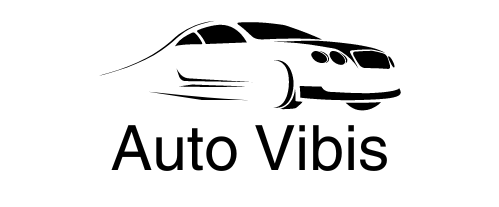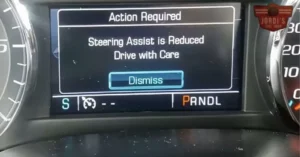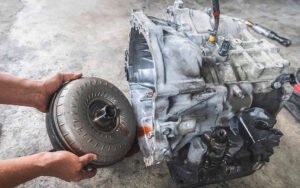When I first got behind the wheel of a Chevrolet equipped with the 1.5L turbocharged engine, I was impressed by how lively it felt for a small four-cylinder. The compact size makes it efficient, yet it delivers a surprising punch when you step on the gas.
You’ll find this engine in popular Chevy models like the Malibu, Equinox, and Cruze—cars that are meant to balance affordability, practicality, and modern features.
But as much as I enjoy the responsiveness and fuel savings, I’ve also come across plenty of discussions from fellow owners about reliability concerns. Like many modern turbocharged engines, the 1.5L has its strengths and weaknesses.
Some drivers love it without issues, while others run into frustrating problems earlier than expected. In this blog, I want to take you through the most common issues this engine faces, what symptoms to watch for, and how to deal with them before they become bigger headaches.
Understanding the 1.5L Chevy Engine
Before we dive into the problems, it helps to understand what makes this engine different. The 1.5L turbo engine is part of General Motors’ Ecotec family, designed to replace larger naturally aspirated engines with something more efficient. With direct fuel injection, turbocharging, and advanced controls, it promises a balance between performance and economy.
On paper, the numbers look solid:
- Displacement: 1.5 liters
- Configuration: Inline 4-cylinder
- Turbocharged: Yes
- Horsepower: Around 160 hp (varies by model/year)
- Torque: 184 lb-ft (approx.)
- Fuel System: Direct Injection
This engine has been used in:
- Chevrolet Malibu
- Chevrolet Equinox
- Chevrolet Cruze (later years)
- GMC Terrain (same powertrain)
The small turbocharged design is excellent for fuel economy and emissions, but it also introduces potential wear and maintenance issues if not cared for properly.
Common Problems with the 1.5L Chevy Engine
Now let’s get into the real-world concerns. Based on owner reports, mechanic feedback, and general maintenance patterns, here are the major problems you’re likely to encounter:
Oil Consumption Issues
One of the most frequent complaints is excessive oil consumption. Some owners report having to add oil between changes because the level drops quickly.
Why it happens:
- Turbocharged engines naturally put more stress on internal components.
- Direct injection can allow carbon buildup on piston rings.
- Weak piston ring sealing may allow oil to burn.
Symptoms:
- Low oil level warning between oil changes.
- Blue smoke from exhaust.
- Reduced performance.
What to do:
- Regularly monitor oil levels.
- Stick to high-quality synthetic oil.
- Check for Technical Service Bulletins (TSBs) from Chevrolet for potential fixes.
Turbocharger Failures
The turbo is one of the highlights of this engine—but also one of its weak points. When the turbo starts to fail, you may notice reduced power or strange noises.
Why it happens:
- Poor lubrication due to oil issues.
- Excessive heat.
- Contaminants damaging the turbo blades.
Symptoms:
- Whistling or whining sounds under acceleration.
- Loss of boost power.
- Engine warning lights.
What to do:
- Use manufacturer-recommended oil.
- Allow the engine to idle for a short time after heavy driving to cool the turbo.
- Replace the turbo if damage is severe (an expensive repair).
Carbon Buildup (Direct Injection Problem)
Like many direct injection engines, the 1.5L Chevy is prone to carbon buildup on intake valves. Since fuel no longer washes over the valves, deposits can collect and restrict airflow.
Symptoms:
- Rough idle.
- Misfires.
- Decreased fuel efficiency.
Solution:
- Walnut blasting (a cleaning method) is the most effective fix.
- Adding fuel system cleaners can help prevent, but not fully cure, buildup.
- Some owners install catch cans to reduce oil vapor deposits.
Cooling System Leaks (Head Gasket & Coolant Issues)
Another concerning issue is coolant leaks, sometimes linked to head gasket failure. Owners of Malibu and Equinox models have reported coolant loss without visible leaks.
Why it happens:
- Weak gaskets.
- Internal leaks into the combustion chamber.
- Cracks in the cylinder head (rare but possible).
Symptoms:
- Overheating.
- White smoke from exhaust.
- Sweet smell from engine bay.
What to do:
- Check coolant levels regularly.
- Pressure test the cooling system.
- Replace the head gasket if necessary.
Timing Chain Problems
While not as widespread as in some older GM engines, there are cases of timing chain stretching or failure.
Symptoms:
- Rattling noise at startup.
- Engine misfires.
- Check engine light.
Solution:
- Regular oil changes (clean oil prevents timing chain wear).
- Replace timing chain if wear is detected early.
Maintenance Tips to Prevent Problems
The 1.5L Chevy engine can last a long time if taken care of. Here’s how to reduce the chances of problems:
- Change oil every 5,000–7,000 miles with high-quality synthetic oil.
- Use Top Tier fuel to minimize carbon deposits.
- Inspect coolant levels monthly.
- Listen for unusual sounds from the turbo or timing chain.
- Clean intake valves every 50,000–70,000 miles if symptoms appear.
Repair Costs and What to Expect
- Turbo replacement: $1,200 – $2,500
- Head gasket repair: $1,500 – $2,000
- Carbon cleaning (walnut blasting): $400 – $700
- Timing chain replacement: $1,000 – $1,800
- Oil consumption repairs (piston rings): $2,000+
These numbers can vary depending on the shop and location, but they give you an idea of what you might face.
Is the 1.5L Chevy Engine Reliable?
It’s a mixed bag. Many owners drive their Malibus, Equinoxes, and Cruzes for well over 100,000 miles without major issues. Others encounter oil consumption or turbo failures as early as 60,000 miles.
The key factor is maintenance. If the engine is serviced on time with proper oil and fuel, it tends to hold up much better. Neglect, on the other hand, quickly exposes its weaknesses.
Final Thoughts
If you’re considering buying a Chevy with the 1.5L engine, I’d say it’s not a bad choice—but you should go in with your eyes open. The efficiency and smooth performance are real strengths, but you’ll need to stay on top of maintenance and watch for early warning signs of trouble.
Personally, I like the way the engine feels on the road. It makes cars like the Equinox more enjoyable while still being practical for everyday use. But as with any turbocharged, direct-injection engine, it requires more care than a simple naturally aspirated one.
So, if you already own one, take good care of it. If you’re planning to buy one, weigh the pros and cons carefully.




